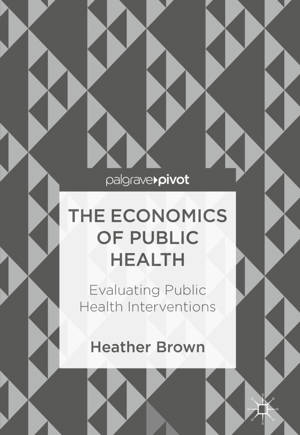
- Retrait gratuit dans votre magasin Club
- 7.000.000 titres dans notre catalogue
- Payer en toute sécurité
- Toujours un magasin près de chez vous
- Retrait gratuit dans votre magasin Club
- 7.000.000 titres dans notre catalogue
- Payer en toute sécurité
- Toujours un magasin près de chez vous
The Economics of Public Health
Evaluating Public Health Interventions
Heather Brown
Livre relié | Anglais
94,95 €
+ 189 points
Description
Non-communicable diseases have surpassed infectious diseases as the leading cause of morbidity and mortality in developed countries. Prevention and treatment of the causes and consequences of lifestyle-related diseases forms an important part of health policy in the twenty-first century. Public health economics - from quantifying the problem, to evaluating interventions and developing toolkits to assist decision makers - is an essential area for any postgraduate student and researcher with an interest in applied economics to understand.
There are a wide range of techniques from mainstream economics and health economics that can be applied to the evaluation of public health policy and public health issues. In this book, Brown presents examples from developed countries to illustrate how economic tools can be applied to public health. Further, cross-country comparisons illustrate how contextual factors related to healthcare systems, demographics and environmental factors may impact on outcomes and the cost-effectiveness of public health policies, in order to aid understanding and help students apply theory into practice.Spécifications
Parties prenantes
- Auteur(s) :
- Editeur:
Contenu
- Nombre de pages :
- 107
- Langue:
- Anglais
Caractéristiques
- EAN:
- 9783319748252
- Date de parution :
- 23-04-18
- Format:
- Livre relié
- Format numérique:
- Genaaid
- Dimensions :
- 148 mm x 210 mm
- Poids :
- 344 g







